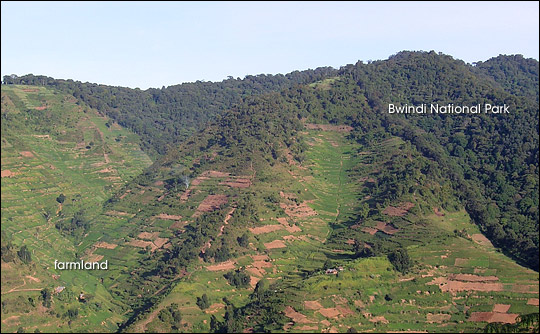

Can We Afford It? | |||
|
Stanley Wood, of the International Food Policy Research Institute (IFPRI), agreed with Imhoff’s emphasis on the question of costs. “The bottom line is food availability and food affordability. How stretched will our incomes be to meet our food requirements?” Wood works with a team from the IFPRI that collaborated with Imhoff on the net primary production work and which has joined with him on a new proposal that builds on the initial work. Imhoff and the IFPRI team hope to improve their understanding of the flow of net primary production between countries. Wood said, “For example, let’s say that energy security becomes an increasing concern and the U.S. turns to biofuels. The global price of maize could rise steeply because of competition between maize for food and feed, and maize for biofuels. This would create a double-edged sword for poor countries: the increased prices would generate more income for developing country farmers, but would be bad news for poor consumers.” Widening the global picture is also something that Imhoff looks to do. “We have begun projecting what would happen to plant production with climate change, and you don’t have to look very far to see that the geopolitics of food production could change significantly, with some countries winning and others losing. Even without climate change, we are already rubbing up against some limits in our planet’s ability to supply us,” he said. |
|||
 | |||
|
Both Wood and Imhoff hope their data set on human use of net primary productivity, which is now available through SEDAC, will be useful to policy and decision makers, both in governmental and nongovernmental agencies. “We hope to have more one-on-one conversations with users in the future,” Imhoff said. “With the unprecedented population levels that we have now, surprises can develop very quickly. We need to be ready.” However, even with a growing global population, increasing consumption levels, and other global changes bearing down on us, Imhoff emphasized the positive. “We have the technology to get out ahead of this. The data isn’t just showing us the bad news; it is also giving us the power to study the changes ahead and understand them,” he said. “We are far from being helpless. Our ability to assess our environment and our situation should give us a sense of empowerment.” |
In southwestern Uganda, demand for farmland has brought people to the very edge of Bwindi National Park, one of the last remaining fragments of habitat for the critically endangered mountain gorilla. Despite national intentions to preserve the remaining gorilla habitat in Uganda, Democratic Republic of Congo, Rwanda, and Burundi, the area is one of Africa’s most densely populated. Human pressure on the forest reserves is intense; illegal logging, poaching, and farming in protected areas are constant threats. (Photograph courtesy Nadine Laporte.) | ||